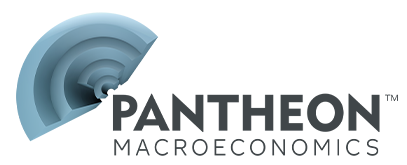- China’s export growth bounced back in March, due to a pick-up in activity after the Lunar New Year holiday.
- The increase in shipments was particularly strong to traditional markets, the G7 and the EU.
- President Trump’s postponement of tariffs on electronic goods gives Chinese exports a breather.
Kelvin Lam (Senior China+ Economist)China+
- China is unlikely to back down openly because of Mr. Xi’s personality and the country’s historical context.
- The State Council published a white paper outlining the official stance on Sino-US trade frictions.
- China will need to worry about second-order retaliation from the US via Vietnam and Mexico.
Kelvin Lam (Senior China+ Economist)China+
- China appears to be prioritising RMB stability over rate cuts, after decent activity data at the start of the year.
- Industrial profits saw tangible improvements in the first two months, led by rising manufacturing demand.
- The stimulus-led profit growth recovery in China will face significant headwinds from rising trade tensions.
Kelvin Lam (Senior China+ Economist)China+
- - CHINA CRANKS UP FISCAL SUPPORT; LIKELY MORE TO COME
- - BOJ SHIFTING TO HAWKISH BIAS AS FOOD INFLATION RISES
- - KOREA CHIP EXPORTS UNDER COMPETITIVE PRESSURE
Kelvin Lam (Senior China+ Economist)China+
- The BoJ left rates unchanged at yesterday’s meeting, citing the evolving external situation as a new risk.
- The Bank considers developments in domestic wages and prices are in line with it achieving its policy target.
- We continue to expect two more hikes in 2025, taking rates to 1%, with the next rise in Q2.
Kelvin Lam (Senior China+ Economist)China+
- China’s CPI fell more than the market expected, dragged down by weak food and services inflation.
- PPI deflation eased slightly; NDRC announced a cut to steel production and measures to curb ‘Nei Juan’.
- Japan’s full-time regular base pay growth hit a 32-year high, giving the BoJ confidence to normalise rates.
Kelvin Lam (Senior China+ Economist)China+
- China has retaliated to US tariffs with its own tariffs on American agricultural products, and company bans.
- Korean WDA exports reversed trend and fell in February, due to weaker demand for semiconductors.
- Korea’s low-end chip production is facing intense competition from China, leading to falling unit prices.
Kelvin Lam (Senior China+ Economist)China+
- Japan’s Q4 GDP grew by more than the market had expected, driven primarily by stronger net exports.
- Domestic demand disappointed, though spending on durables was strong; business investment rebounded.
- US trade policy uncertainty is overshadowing certain industrial sectors, weighing on Japan’s future growth.
Kelvin Lam (Senior China+ Economist)China+
- China’s official PMIs unexpectedly fell in January; manufacturing activity dropped to a five-month low.
- The services PMI reversed December’s gain and fell back to the period-average prior to that month.
- Manufacturers and developers are optimistic about the outlook despite local and global headwinds.
Kelvin Lam (Senior China+ Economist)China+
- - CHINA’S Q4 ACTIVITY BUMP IS LIKELY TO FADE
- - BOJ IS KEEN TO NORMALISE RATES
- - BOK IS LIKELY TO RESUME CUTS, DESPITE POLITICAL MESS
Kelvin Lam (Senior China+ Economist)China+
- The BoK delivered a ‘dovish hold’ yesterday due to FX-volatility worries, in line with our forecast.
- The MPB recognises the need to shore up the economy but wants to learn more of Trump’s plans.
- The Bank is likely to resume rate cuts in February, as downside risks to domestic growth are rising.
Kelvin Lam (Senior China+ Economist)China+
In one line: China's 2024 export value surpasses Covid peak, trade surplus hits record high
Kelvin Lam (Senior China+ Economist)China+
In one line: China’s producer price deflation eases further, but overcapacity risks remain.
Kelvin Lam (Senior China+ Economist)China+
In one line: China’s core inflation shows a silver lining; Headline CPI nears deflation on falling food prices.
Kelvin Lam (Senior China+ Economist)China+
In one line: China’s foreign reserves fell more than consensus in December, thanks to sizable valuation effect.
Kelvin Lam (Senior China+ Economist)China+
- China’s export growth rebounded in December, led by improvements in ASEAN and US shipments.
- China suffers from overcapacity in some industries, with export volume growing faster than value.
- Will President Trump follow through on his tariff threats on his first day, and how will China respond?
Kelvin Lam (Senior China+ Economist)China+
- China’s CPI inched closer to deflation in December; fresh food and pork prices were the main drags.
- Core inflation improved for the third straight month, highlighting stabilising demand conditions.
- PPI reflation hinges on stimulus-related demand and how China addresses its overcapacity issue.
Kelvin Lam (Senior China+ Economist)China+
- China’s currency is under pressure from expectations of more PBoC easing and a less dovish Fed.
- Foreign reserves fell sizeably in December, driven primarily by currency and bond valuation effects.
- Some of China’s policy firepower has been saved, to be deployed depending on future US trade policy.
Kelvin Lam (Senior China+ Economist)China+
In one line: Despite upside surprises on headline numbers, Korean WDA exports weakened in December amid regional demand slowdown and political uncertainty
Kelvin Lam (Senior China+ Economist)China+
China's PMI data offers little cause for celebration
Kelvin Lam (Senior China+ Economist)China+
